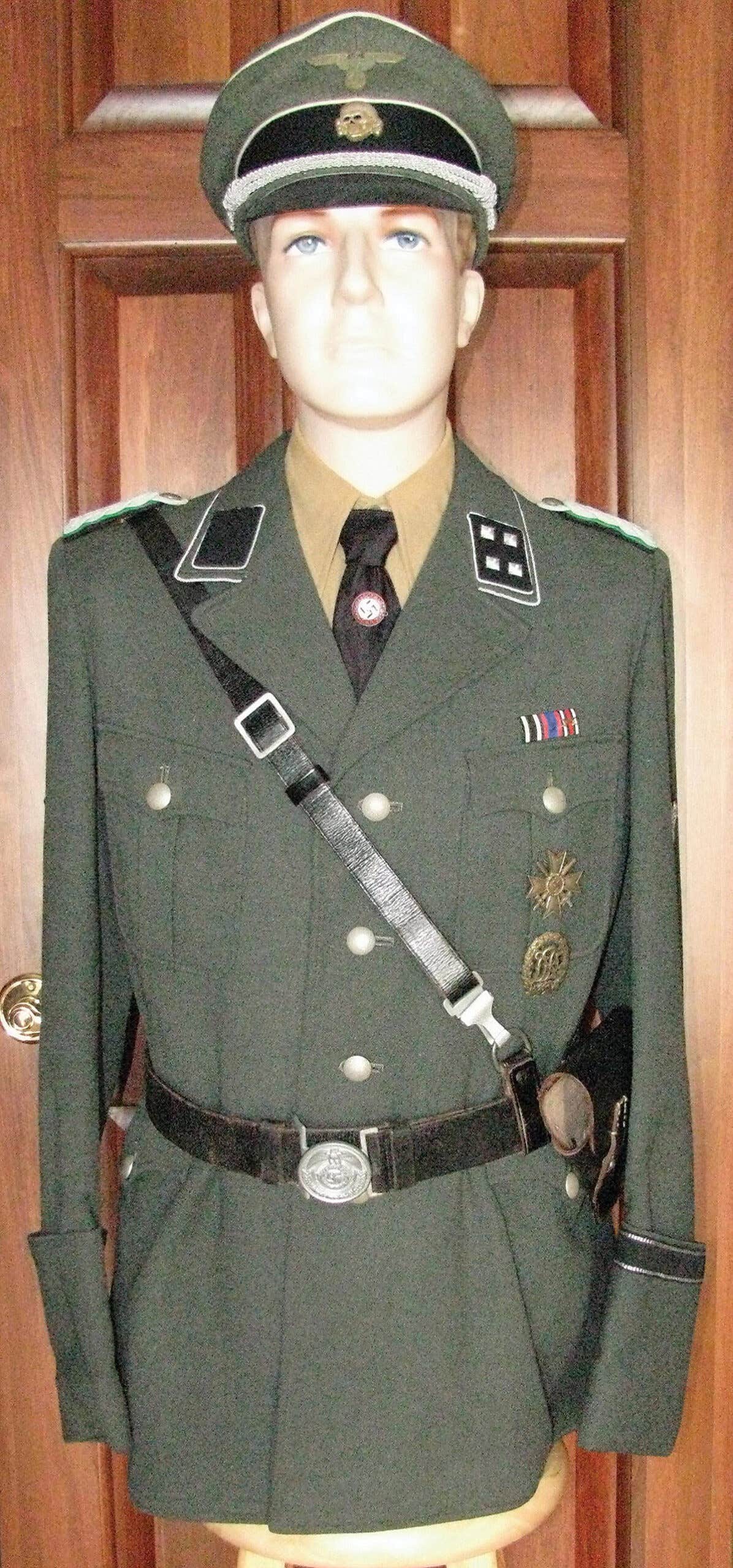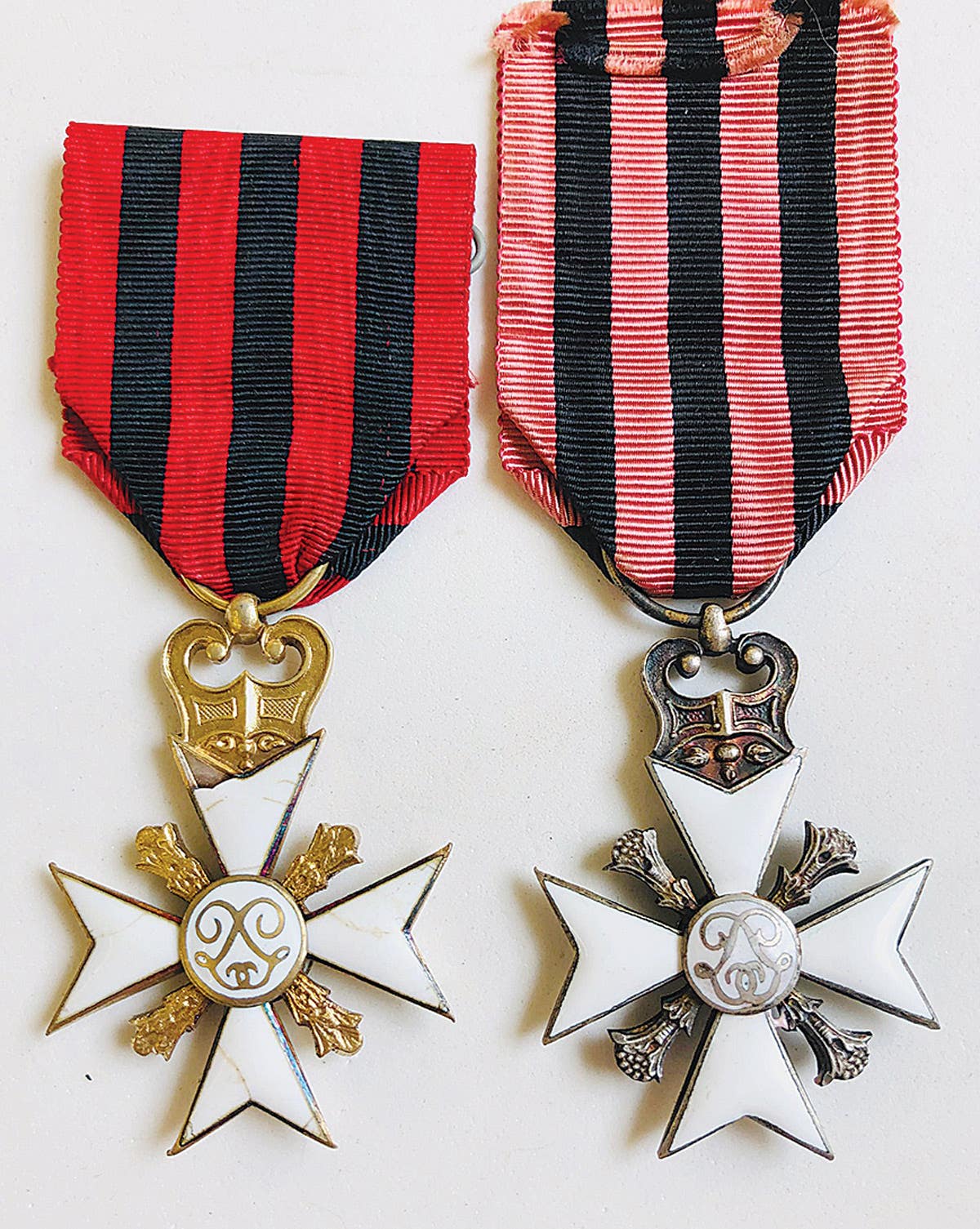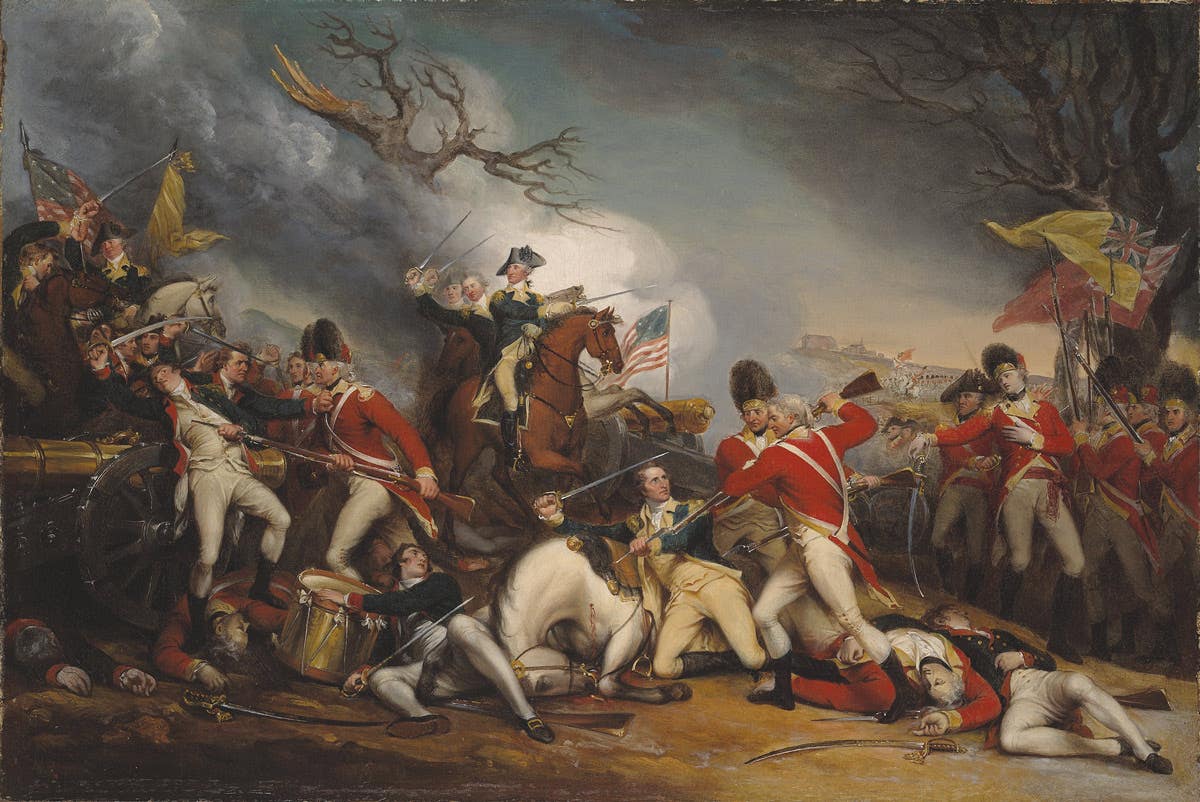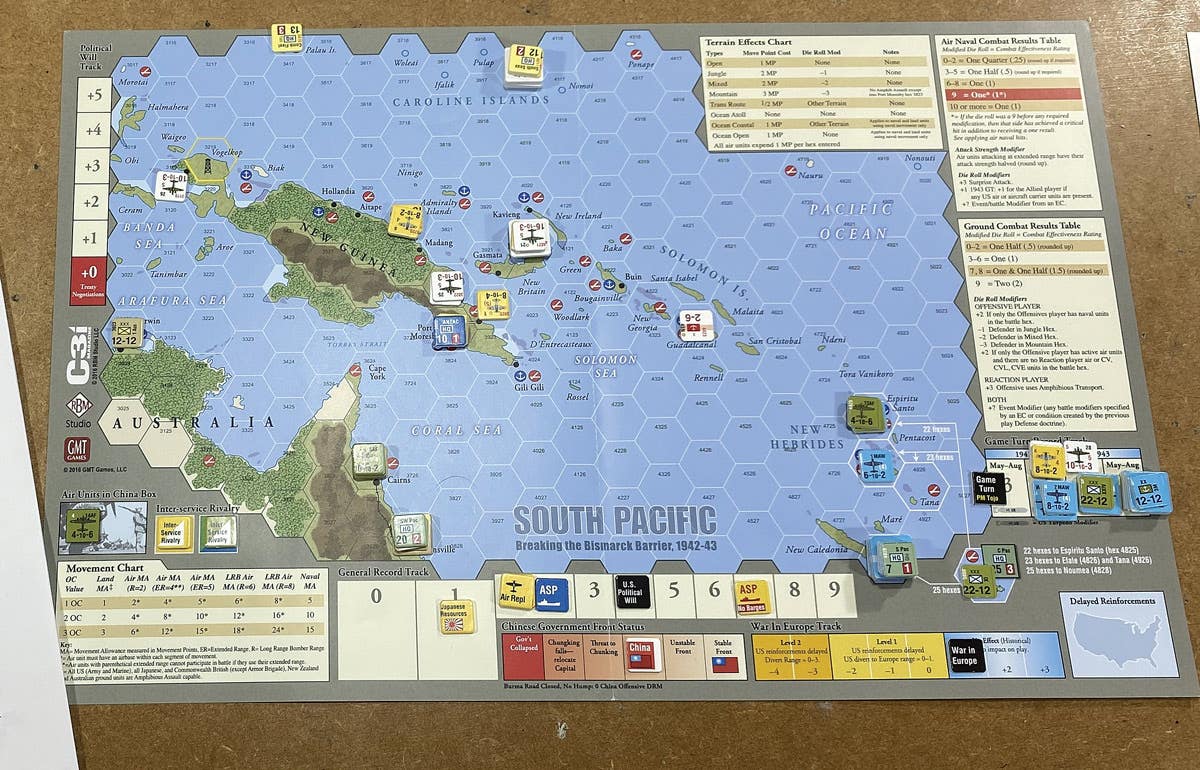The Gunther Prien plaquette
One of the most audacious and incredible submarine exploits of World War II took place a little more than a month into the war. On the night of Oct. 13 and 14, 1939, the German submarine U47 managed to enter the British Royal Navy’s fleet anchorage at Scapa Flow …
One of the most audacious and incredible submarine exploits of World War II took place a little more than a month into the war. On the night of Oct. 13 and 14, 1939, the German submarine U47 commanded by Kapitänleutnant Günther Prien managed to enter the British Royal Navy’s fleet anchorage at Scapa Flow (known as impenetrable Scapa and early in the morning of the 14th managed to torpedo the battleship H.M.S. Royal Oak, killing 24 officers and 809 sailors.
Although Prien’s account of the operation, published in his book, “Mein Weg Nach Scapa Flow” (My Path to Scapa Flow) appears to be mostly fiction, as much of his story of the attack varies from the facts, despite this, he appears to have accomplished a remarkable feat. Even today, some in Britain claim that he was never in Scapa Flow and that the ship was sunk by sabotage. He claimed to have torpedoed the battlecrusier H.M.S. Repulse, saying that “Her bow sand deep into the water.”
However, the Repulse, The only other vessel in that part of the anchorage was H.M.S. “Pegasus,” a seaplane tender, at another across the Flow, two miles from the Royal Oak. She could not have been mistaken for the Repulse, if Pren could even see her on such a dark night and blacked out. In any case, she was not hit by a torpedo and her bow did not sink deep into the water. He said that the Royal Oak sank in a few seconds, and “The harbor springs to life, destroyers were lit up, signalling starts on every side. Destroyers rushing about dropping depth charges and submarine hunting.” None of this took place. Actually the ship sank in seven to ten minutes and the harbor remained silent.
The only response was from the “Pegasus,” as some of her crew saw the explosions and launched rescue boats toward the Royal Oak. Prien also claimed that he was closely pursued by a destroyer and was just able to escape into holm Sound and that as he got away he heard depth charges behind him in the Flow. All pure fiction, as there were no destroyers, no pursuit and no depth charge explosions. Only the next day did destroyers appear to begin searching for a U-Boat. It appears possible that the “evil dwarf,” Goebbles, having been handed an unequalled propaganda bonanza, thought that Prien’s easy in and easy out, was not exciting enough so added a lot of fictional details to spice up the story when he took over orchestration of the entire affair, including the management of Prien’s book, which became a best seller in Germany.
When the U-47 docked at Wilhelmshavenon the 17th,Prien was met by Dönitnz, Rader and a bevy of admirals. Prien immediately received the Iron Cross First Class and every crewman was decorated with the Second Class. Prien and his entire crew were flown to Berlin to meet an elated Hitler. Prien received the Knight’s Cross of the Iron Cross from Hitler’s hand, the first of the war to be awarded to a U-Boat commander.
Prien had been hand-picked by Dönitz to undertake this perilous mission, being noted for his outstanding seamanship and seagoing experience. He had joined the Kriegsmarine from the merchant marine where he had sailed as an officer and held a Master’s certificate. The venture had been planned by Donitz, who had envision the scheme after closely examining Luftwaffe aerial photos of the Scapa Flow area. It appeared, to him, that there was enough room between the blockships, sunk during World War I to obstruct Holm Sound, one of the possible harbor entrances, for a submarine to squeeze through. As luck would have it, favoring the Germans, the British had another blockship on the way to completely block Holm Sound, but it was sunk by a U-Boat during the voyage to Scapa Flow.
A second was dispatched but belatedly arrived a day after the damage had been done. Although aware that two German submarines, UW-116 and the U-118, were both sunk during World War I, attempting to penetrate Scapa Flow, Prien did not hesitate to accept Dönitz’s proposition that he make the attempt, which Dönitz called “the boldest of the bold enterprises.” Even a dismayed Churchill paid tribute to Prien, saying that “This entry by a U-Boat must be considered a remarkable feat of professional skill and daring.” Prien continued his sinking spree, accounting for 213,000 tons of Allied shopping (32 shops). He was the first U-Boat officer to be awarded the Oakleaves, the first to be awarded the U-Boat badge with diamonds, and the first recipient of the Naval Honor Dager. However, his career of destruction came to a close when the U-47 was sunk with all hands, by H.M.S. Wolverine on March 8, 1941.
The discrepancies in Prien’s story remain a mystery, as does the exact origin and purpose of the Prien plaquette. It is a rectangle of gray “war-metal” (maybe zinc), 65 mm high by 50 mm wide and rather thick, about 2 mm. The front has in its center, a profile of Prien, above a submarine and waves. Below this it reads REPULSE and ROYAL OAK in two lines. Around the edge it reads DER HELD VON SCAPA FLOW U-BOOT KOMMANDANT GÜNTHER PRIEN 1939. (The Hero of Scapa Flow, U-Boat Commander Günther Prien 1939). The back is plain.
In the excellent book, Kriegsmarine Uniforms and Traditions, Volune 2 by LTC John R. Angolia and Adolf Schlicht, published by R. James Bender, on page 120 is an illustration depicting a fitted case, recessed to hold one of these plaquettes and an Iron Cross First Class. The photo caption reads, “Specially cased screwback Iron Cross 1st Class with non-portable award purportedly belonging to Günter Prien, the hero of Scapa Flow.” If this is Prien’s Iron Cross 1st Class, it could not be the one given to Prien upon his arrival home after sinking the Royal Oak as there had not been enough time to design and manufacture such a plaquette or elaborate fitted case. It could have been possible to have made up this combination to honor Prien, later on, with a replacement Iron Cross. However this does not explain the plaquette in the author’s collection.
How the plaquette was used seems obvious from the photo in LTC Angolia’s book, but who, besides Prien was given this combination? One poossible explanation was that this was given to U-47 crewmen or former crew members who later on in the war were give the First Class Iron Cross. It seems amazing that 15 of the U-47s crew who were aboard during the attack on the Royal Oak survived the war and could habe been so decorated. If this had been a general issue to all U-Boat men who were awarded the corss, then surely a number of these combinations or the plaquette would have appeared. However, in 65 years of militaria collecting the autor is aware of only two of them, the one in his collection and the other depicted in LTC Angolia’s book.
Therefore the explanation for this plaquette and the Iron Cross comination remains an enigma.
Clem graduated from Jesuit Catholic Preparatory School in New Orleans in 1948, joined the US Navy Reserves, served in the US Army Signal Corps during the Korean War and attended the US Merchant Marine Academy.
He served 30 years aboard numerous merchant ships which allowed him to pursue his childhood passion of collecting military insignia. During his seven years of sailing in and out of Vietnam, Clem acquired an unimaginable collection of Vietnam War insignia. Every country’s port was a gold mine of tailor shops and junk stores.
In 1989, Clem took over the Vietnam Insignia Collectors Newsletter from Cecil Smyth. He quickly became the de facto overseer of the hobby.
Clem contributed numerous articles on various military insignia to Military Trader and Military Advisor. Clem died at the age of 87 on 3 February 2018. His knowledge and expertise will be missed. He will long be remembered. — Bill Brooks







